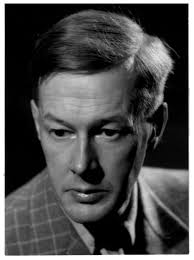Donizetti: Roberto Devereux
Teatro Carlo Felice, Francesco Lanzillotta
DYNAMIC 37755
We have seen more of this opera recently than probably any time in the last century and it is a worthy partner to the more familiar Anna Bolena. The production is very dark – you may need a large screen and a darkened room to pick up some of the detail – but the music is well focussed throughout and Francesco Lanzillotta keeps his forces moving swiftly. Mariella Devia is a tight-lipped monarch attempting to maintain emotional control while the world falls apart around her. All the solo parts are well taken and the chorus creep about as if terrified of what might happen next.
Tango Under The Stars
Los Angeles Philharmonic, Gustavo Dudamel
MAJOR 739608
The combination of the expertise of the Los Angeles Philharmonic and the Latin enthusiasm of Gustavo Dudamel make for a glorious evening. If the audience are not quite what one might wish for in a concert hall, the outdoor Hollywood Bowl is able to absorb the extraneous noise and the applause between movements. The central work is the 2nd Guitar Concerto by Lalo Schifrin, with Angel Romero as soloist followed by four dances from Estancia by Ginastera.
For the final four pieces by Astor Piazzolla they are joined by Tango Buenos Aires who dance with a heighted intensity and highly sensuous movements which is totally captivating.
Vaughan Williams: Job; Symphony No 9
Bergen Philharmonic Orchestra, Sir Andrew Davis
CHANDOS CHAN 5180
Job, a Masque for Dancing is heard rather than seen these days, which is a pity for this is undeniably ballet music of the finest order. The combination of Job with the 9th Symphony is telling as their composition spans almost thirty years and yet the composer’s voice is immediately obvious in both. Not that Vaughan Williams had not developed over the period, so much as his own voice always shines through with immediacy. Sir Andrew Davis’ strengths as an interpreter of English music are well known and this is another excellent example of his insights and understanding.
Schubert; Works for solo piano Vol 2
Barry Douglas
CHANDOS CHAN10933
This may only be vol 2 but already this is obviously a very fine undertaking and we can look forward to the rest of the series. Here we have the Four Impromptus Op 90 and the A major Piano Sonata D959, all late works and showing Schubert at the peak of his powers, none more so than in the final movement of the Sonata which draws on earlier works yet spins a new sense of creativity which is wholly captivating.
Franz Krommer: Symphonies 1-3
Orchestra della Svizzera italiana, Howad Griffiths
CPO 555 099-2
Krommer has all but vanished from our concert halls. Though held by many in his lifetime to be valued as highly as Haydn he rapidly went out of fashion and disappeared from public performance by the end of the nineteenth century. This is one of the strange acts of fate which seem to fall on some composers for no obvious reason. These three symphonies would grace any early romantic programme and the composer’s voice is individual enough to make for a worthy place alongside more familiar composers. The difficulty, I suspect, is that the audience will not necessarily react as enthusiastically to a name on a concert list that they do not no. a pity for these are fine pieces.
William Boyce; Symphonies
Academy of St Martin in the Fields, Sir Neville Marriner
CAPRICCIO C8006
Recorded in 1993, this is a welcome reissue of a very fine recording, full of life and energy.
Dutilleux; Symphony No 2 etc
Orchestre National de Lille, Darrell Ang
NAXOS 8.573596
Henri Dutilleux is still underrepresented in our concert halls and so this new cd goes some way towards offsetting that balance. The 2nd Symphony is extrovert in its attack and detail, with splendid tone colours. This is taken up again in the three movements of Timbres, espace, movement which was revised in 1991. The sixteen short movements of Mystere de l’instant give snatches if not outbursts of creativity, which are gone almost before they can impinge.
Beneath the Northern Star
The Orlando Consort
HYPERION CDA 68132
This is early polyphonic music stretching from the late thirteenth century to the early fifteenth. The Orlando Consort explore the way musical lines were elaborated and embellished within their liturgical settings. Early pieces are often anonymous, and even where composers are named we often know little of them except for the quality of the writing. The cd is both instructive and beautifully performed.
Brahms; complete solo piano music vol 4
Jonathan Plowright
BIS 2137
The two sets of Variations on a Theme of Paganini bookend this new collection and between them come compelling readings of the Op10 Ballades and Op119 Piano Pieces. Jonathan Plowright’s approach brings a chamber intimacy to the works which is always rewarding.
Sullivan; Songs
Mary Bevan, Ben Johnson, Ashley Riches with David Owen-Norris, piano
CHANDOS CHAN 10935(2)
I wish I could feel more enthusiastic about this collection but, though a few songs catch the ear, too many are worthy but dull. Sullivan may have hated the fact that his popularity stemmed from his work with Gilbert but there is little here to match anything from Yeomen of the Guard or Mikado.
British Tone Poems Vol 1
BBC National Orchestra of Wales, Ramon Gamba
CHANDOS 10939
It is surprising how much music by familiar names is still so little known. Here we have a fine collection of British tone poems none of which I can recall ever hearing live. Ivor Gurney’s A Gloucestershire Rhapsody is Elgarian in feel but none the worse for that. Frederick Austin’s Spring and William Alwyn’s Blackdown most capture the imagination, while Henry Balfour Gardiner’s moving A Berkshire Idyll receives its premiere recording. With Vaughan William’s The Solent to conclude the recording this is a very valuable addition to our understanding of less familiar repertoire.

